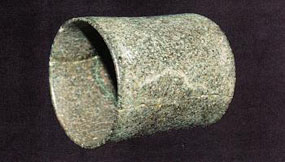

A rare ear spool from Tennessee made of steatite. These date to the late Woodland Period. This style is referred to as “napkin ring” due to the resemblance. The ear lobe would have to have been much enlarged to accommodate these; since it measures 1 1/2 inches in diameter and 2 inches in length. Collection of Mitchell Crisp, Polk County, Tennessee
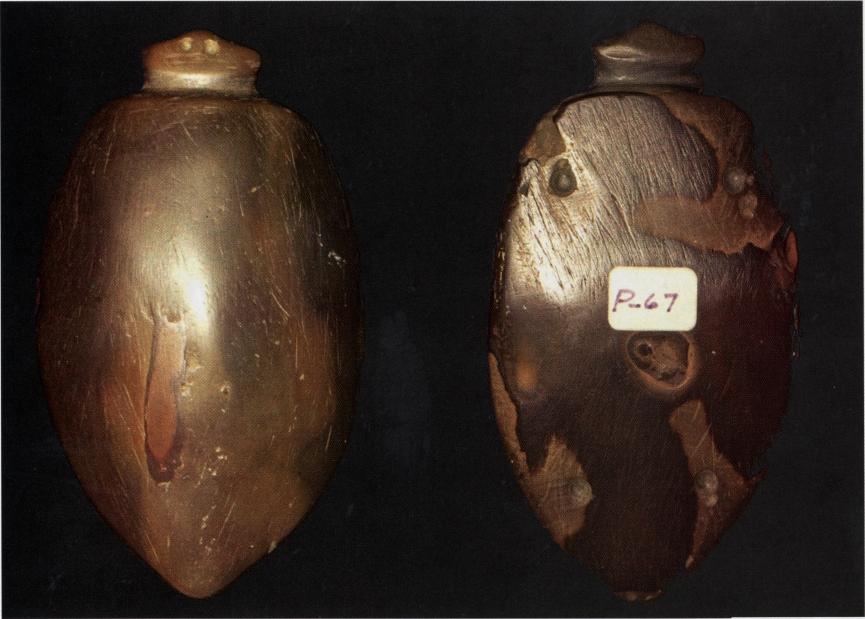

A very interesting “beetle” effigy made from a red claystone that was utilized in Tennessee and Alabama during the Woodland Period for pendants. Note the lifelike head and that the reverse side features four drilled out “feet.”It measures just over 3 inches in length. Collection of Ray Kilgore, Cusseta, Alabama
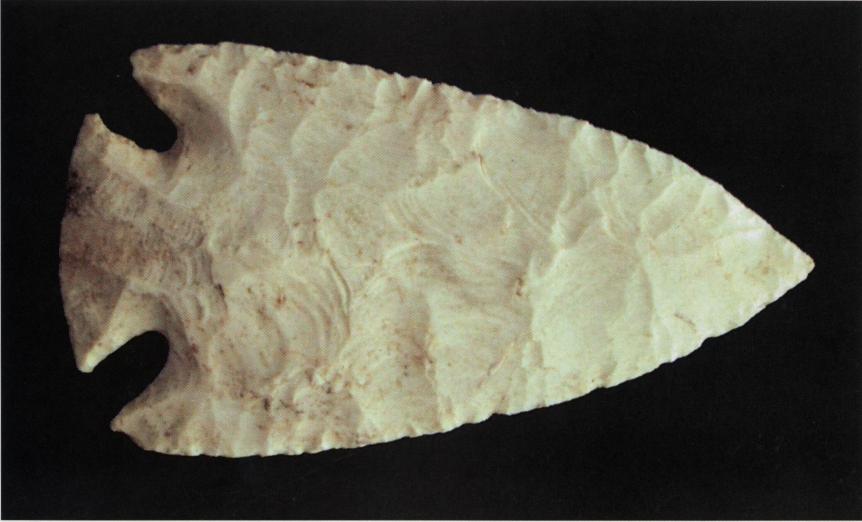

This 41 inch long Hopewell point is made from a white Burlington chert with tinges of pink It was found by Felix Broleo of Johnston City, Illinois in the 1950’s. He was excavating a Hopewell site at the mouth of the Saline River in Hardin County, Illinois. Collection of Mike Sutton, Harrisbug, Illinois
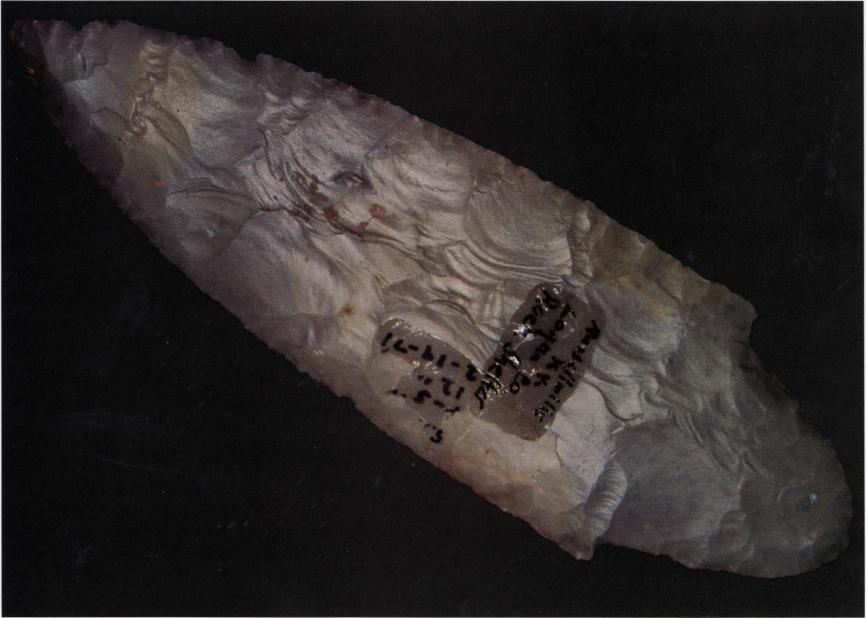

A 6″ long by 1 7/8″ wide Adena blade made from a high quality hornstone. This was found in Logan County, Kentucky on February 19, 1971. It was pictured many years ago in black and white in the 1972 CSAJ #4 pg. 184. Collection of Bob Yakimicki, Knox, Indiana


Two Morse Style knives made from Burlington chert. These were found under a tree in 1969 by Bill Fetch at the Synder Site in Calhoun County, Illinois. Morse knives are always quite large, and these are no exception,measuring 8 3A inches in length. Collection of Dennis Bushey, Cullman, Alabama
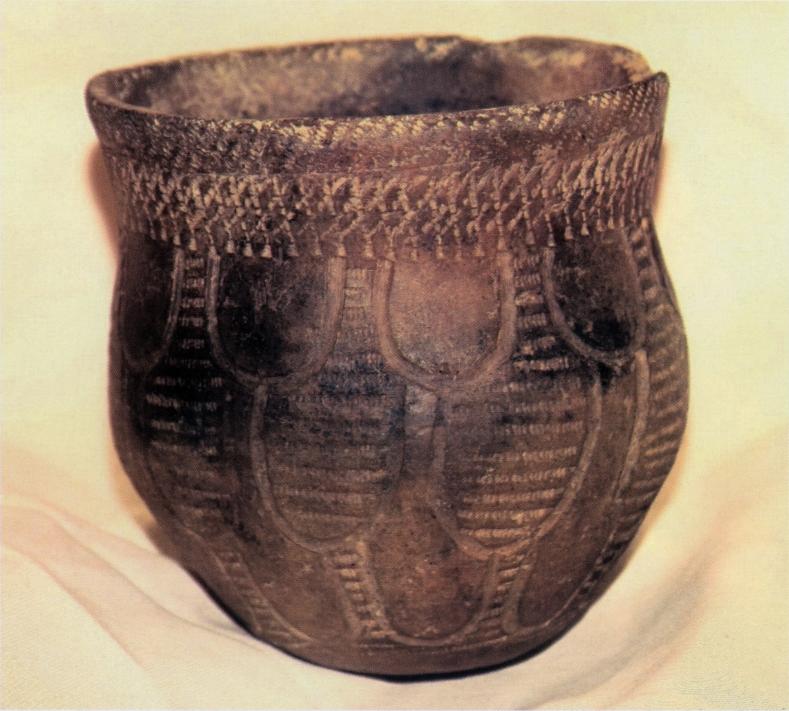

Very few Hopewell Period pottery vessels have survived in whole condition. This vessel was found near the Baehr Mounds in Brown County, Illinois near the Illinois River by Scott Vandeventer. It is known as a Havana Zone style ceramic. The design is especially intricate, featuring parallel lines within “zones,” ziz-zag lines and cross hatching. Collection of the Museum of Native American History Bentonville


The Woodland Period has all sorts of odd and strange artifacts. Cones are one of them They were made primarily of hematite, which is very heavy and difficult to work. Most are highly polished. They usually range from 1 1/2 to 2 inches in diameter. However, some examples have been noted in the four inch range. Some cones are made out of other materials, and several were found in Hopewell Mounds made from rock crystal. The two above are made of hematite and measure 1 1/2 inches in diameter. The one on the lefr is from Clarksville, Tennessee and its finding was documented in the CSAJ Vol. 53 No.2 Page82. The cone on the right was found in Alexander County, Illinois and was once collected by Ben Thompson.


An extremely colorful Snyders Point made from a heat treated Burlington chert. This point was found in Illinois in 1959 and measures 4 inches in length. Collection of Dan Mass, Stoddard, Wisconsin.
